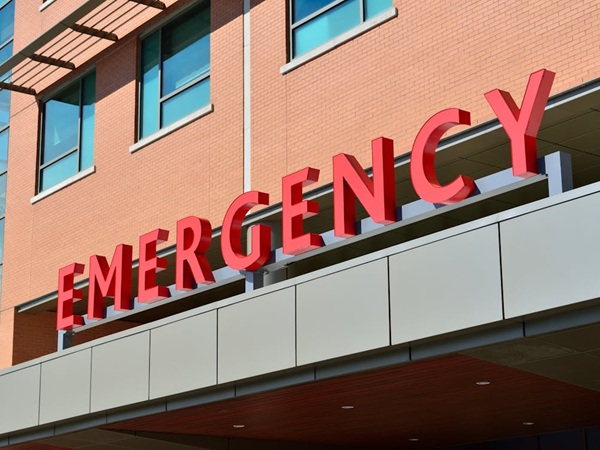BALTIMORE, MD—When medical emergencies strike, every minute counts. Yet for millions of Americans, a trip to the emergency room means hours of waiting in pain and uncertainty before receiving care. A new study has identified which states have the most severe ER waiting time problems, highlighting concerning trends in patient care across the country.
With an ER Wait Time Score of 77.62, Maryland has the longest ER wait time in the U.S. The state ranks worst with patients waiting an average of 228 minutes before receiving care in emergency rooms, and 5% patients who leave before being seen.
“Not only are these extended wait times inconvenient, but they can significantly impact patient outcomes, and may even constitute a form of medical negligence in severe cases,” says Thomas Feiter, CEO of Fighter Law, an Orlando-based law firm specializing in personal injury cases.
To understand the full scope of the problem, Fighter Law analyzed data from the Centers for Medicare & Medicaid Services and the American Hospital Association, examining emergency room metrics from 2022 across all 50 states. Their analysis considered three key factors: average ER wait time in minutes, percentage of patients who leave before being seen, and ER visits per 1,000 population. These metrics were normalized and weighted to calculate a composite ER Wait Time Score, where higher scores indicate longer and more problematic waiting experiences.
Table: The Top 10 States With The Longest ER Wait Times
| Rank | State | Average ER Wait Time (minutes) | ER patients who leave before being seen (%) | ER visits (per 1,000 pop.) | ER Wait Time Score |
| 1 | Maryland | 228 | 5% | 312 | 77.62 |
| 2 | Delaware | 195 | 6% | 425 | 77.02 |
| 3 | Rhode Island | 185 | 6% | 441 | 73.94 |
| 4 | Massachusetts | 189 | 5% | 462 | 70.80 |
| 5 | New York | 184 | 3% | 418 | 54.17 |
| 6 | Illinois | 157 | 5% | 395 | 53.92 |
| 7 | Oregon | 157 | 5% | 365 | 52.14 |
| 8 | New Hampshire | 154 | 4% | 467 | 50.98 |
| 9 | Arizona | 176 | 4% | 293 | 49.52 |
| 10 | Michigan | 153 | 4% | 448 | 49.45 |
East Coast Crisis: Densely Populated States Face Longest Waits
The data reveals a clear regional pattern, with East Coast states dominating the top positions for longest ER wait times. Seven of the top ten states with the worst ER wait experiences are located along the Eastern Seaboard, suggesting a potential correlation between population density and emergency care delays.
Maryland: Nearly Four-Hour Waits
Maryland ranks as the state with the longest ER wait times, scoring a concerning 77.62 on the ER Wait Time Score. Patients in Maryland emergency rooms wait an average of 228 minutes — almost four hours — before receiving care.
“What we’re seeing in Maryland is particularly troubling,” notes Feiter. “When patients are forced to wait nearly four hours in emergency situations, the potential for medical conditions to worsen increases dramatically.”
Despite not having the highest percentage of patients who leave without being seen (5%) or the highest number of ER visits per 1,000 people (312), Maryland’s extremely long wait times push it to the top of the rankings.
Thomas Feiter, CEO of Fighter Law, commented:
“These extended ER wait times have serious implications beyond mere inconvenience. When patients with serious conditions wait hours for care, their medical outcomes can deteriorate significantly. What might have been treatable can become life-threatening, and what might have been reversible can become permanent.
“From a legal perspective, these delays can potentially form the basis for medical malpractice claims when they result in harm that could have been prevented with timely care. Particularly concerning are cases involving time-sensitive conditions like strokes, heart attacks, and severe infections, where the standard of care demands prompt intervention.
“Our findings should serve as a wake-up call for healthcare policymakers and hospital administrators. Solutions might include expanding emergency department capacity, improving triage protocols, increasing staffing, and developing better systems to handle non-emergency cases that currently flood ERs. The regional patterns we’ve identified suggest that addressing this issue requires tailored approaches that consider local demographics and healthcare infrastructure.”
Photo via Pexels
Do you value local journalism? Support NottinghamMD.com today.

